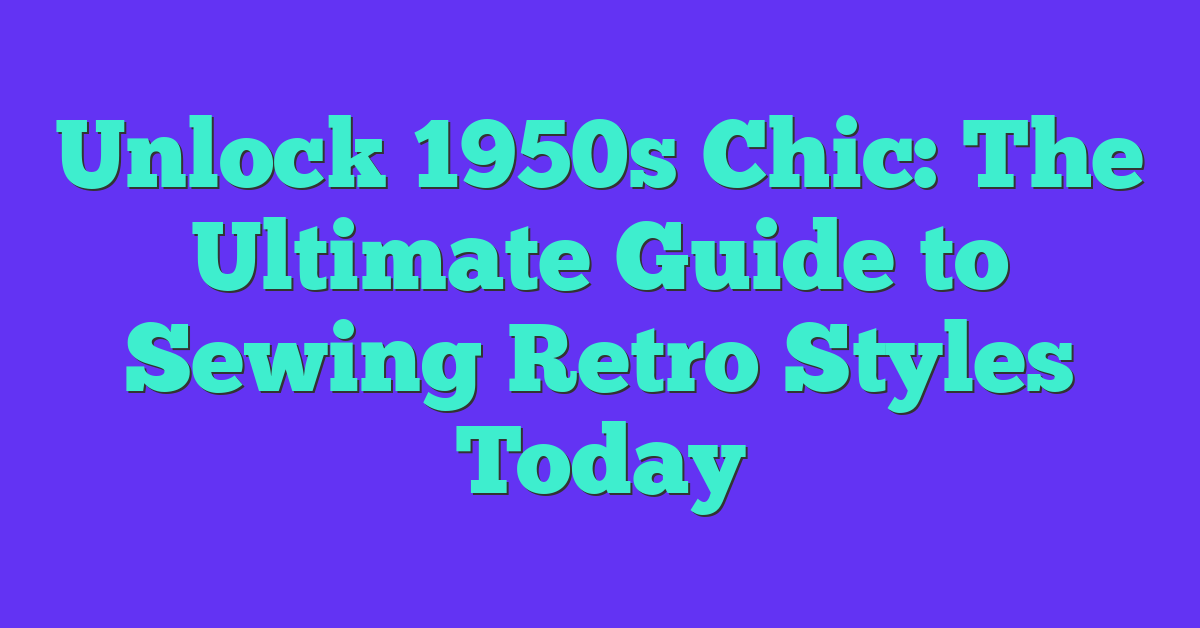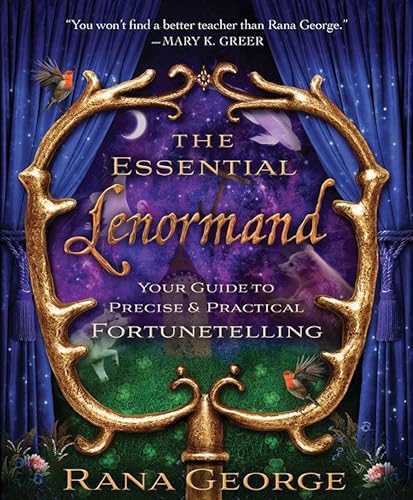Step back into the fabulous 1950s and bring those timeless styles to your wardrobe. Sewing retro fashions not only lets you express your unique style but also connects you to a vibrant era of design. Whether you’re dreaming of poodle skirts or swing dresses, this guide has got you covered.
With easy-to-follow tips and classic patterns, you’ll transform ordinary fabrics into stunning vintage pieces. Embrace the charm of the 50s, experiment with bold prints, and master the art of flattering silhouettes. Ready to create your own retro masterpieces? Let’s dive into the world of 1950s sewing and make those nostalgic looks yours.
Overview of 1950s Sewing Styles
- Silhouettes: Nipped-in waistlines and full skirts create an hourglass figure.
- Fabrics: Cotton, polka dots, florals, and gingham patterns dominate the era.
- Design Elements: Petticoats add volume, ruffles introduce detail, and cinched belts emphasize the waist.
- Garment Types: Dresses, blouses, cardigans, and swing skirts remain popular choices.
- Colors: Pastel hues and bold colors enhance your sewing projects.
Essential Patterns and Designs
Mastering essential patterns and designs is vital for creating authentic 1950s retro styles. These patterns and elements capture the era’s distinctive fashion aesthetic.
Popular Garment Patterns
A-Line Dresses: Feature a fitted bodice that widens towards the hem, creating a flattering silhouette. Ideal for various fabrics like cotton and gingham.
Swing Skirts: Characterized by their full, flowing shape that offers ample movement. Perfect for pairing with nipped-in waistlines.
Pencil Skirts: Offer a slim, tailored fit that emphasizes the waist and hips. Suitable for structured fabrics such as wool blends.
Blouses with Peter Pan Collars: Incorporate classic collars that add a vintage touch. Often paired with cardigans or skirts.
Cardigans with Button Details: Include front buttons and comfortable fits, enhancing versatility in outfits.
Iconic Design Elements
Nipped-In Waistlines: Create an hourglass figure by cinching the waist, a hallmark of 1950s fashion.
Full Skirts with Petticoats: Add volume and movement, essential for achieving authentic retro looks.
Ruffles and Frills: Provide decorative accents, enhancing the feminine appeal of garments.
Cinched Belts: Accentuate the waist, adding definition and style to dresses and tops.
Bold Prints and Patterns: Utilize polka dots, florals, and gingham to infuse vibrant energy into outfits.
Fabrics and Materials
Choosing the right fabrics and materials is essential for creating authentic 1950s retro styles. Here’s what you need to know to bring vintage charm to your sewing projects.

Common Fabrics of the 1950s
The 1950s featured a variety of fabrics that defined the era’s distinctive look:
- Cotton: Lightweight and breathable, ideal for dresses, blouses, and skirts.
- Polka Dots: Popular for their playful and classic appeal, used in prints and patterns.
- Florals: Bold and vibrant floral patterns added femininity to garments.
- Gingham: Checkered patterns perfect for summer dresses and skirts.
- Lace: Used as detailing on collars, sleeves, and hemlines for added elegance.
- Satin: Smooth and glossy, often used for evening wear and accents.
- Jersey Knit: Comfortable and stretchy, suitable for casual blouses and dresses.
Sourcing Vintage-Inspired Materials
Finding the right materials for your 1950s projects involves exploring various sources:
- Local Fabric Stores: Offer a range of cottons, ginghams, and prints reminiscent of the 1950s.
- Online Retailers: Websites like Etsy and Spoonflower provide vintage-inspired fabrics and unique patterns.
- Thrift Stores: Great for finding authentic or similar-era fabrics at affordable prices.
- Fabric Swaps: Participate in community swaps to access a variety of materials.
- Specialty Shops: Stores specializing in retro or vintage fabrics cater specifically to 1950s styles.
- Repurposing Vintage Garments: Salvage fabrics and trims from old clothing to maintain authenticity.
By selecting the appropriate fabrics and sourcing them thoughtfully, you can achieve genuine 1950s looks in your sewing projects.
Sewing Techniques for Retro Styles
Mastering specific sewing techniques enhances the authenticity of your 1950s retro creations. Implement these methods to achieve vintage-inspired results.
Techniques for Authentic Finishes
Achieve genuine 1950s finishes with these essential techniques:
- Topstitching: Use contrasting thread on hems and seams to highlight garment lines.
- Lining Installation: Incorporate full linings for dresses and skirts to ensure structure and comfort.
- Pinking Shears: Finish raw edges with pinking shears to prevent fraying and add a delicate touch.
- French Seams: Enclose raw edges with French seams for a polished, professional look.
- Rolled Hems: Create narrow, rolled hems on blouses and skirts for a sleek, seamless appearance.
- Bias Binding: Apply bias binding to necklines and armholes for flexibility and a smooth finish.
- Buttonholes and Closures: Sew precise buttonholes and secure closures to maintain the garment’s integrity.
Tips for Achieving Retro Accuracy
- Pattern Selection: Choose authentic 1950s patterns that feature characteristic silhouettes like A-lines and swing skirts.
- Fabric Choice: Opt for period-appropriate fabrics such as cotton, polka dots, florals, gingham, lace, satin, and jersey knit.
- Color Palette: Select vibrant and pastel colors commonly used in the 1950s to enhance the vintage feel.
- Details and Embellishments: Incorporate classic details like Peter Pan collars, ruffles, cinched belts, and petticoats for volume.
- Proper Sizing: Follow original sizing charts from the 1950s to ensure garments fit true to the era’s standards.
- Technique Consistency: Maintain consistent stitching techniques and seam allowances to match retro construction methods.
- Accessorizing: Add authentic accessories such as scarves, brooches, and vintage-inspired buttons to complete the look.
Modernizing 1950s Looks
Updating Styles for Today
« 10 Expert Tips on How to Work with Jersey Fabric for T-Shirts Like a Pro
10 Must-Try Sewing for Veterans: Project Ideas to Support Our Heroes »
Integrate nipped-in waistlines to enhance your silhouette. Pair full skirts with tailored jackets for a balanced outfit. Replace traditional fabrics with modern materials like stretch cotton or sustainable blends. Opt for bold prints in accessories to add a contemporary twist. Utilize updated sewing techniques, such as invisible zippers, to maintain a sleek appearance.
Incorporating Retro Elements into Contemporary Fashion
Combine 1950s patterns with current trends, like pairing gingham blouses with high-waisted jeans. Use vintage-inspired sleeves, such as puffed or bishop styles, on modern tops and dresses. Add classic details like peter pan collars or cinched belts to contemporary garments. Mix retro accessories, including cat-eye sunglasses and statement belts, with everyday outfits. Implement retro color palettes, such as pastel hues and bold primary colors, to refresh your wardrobe.
Conclusion
Stepping into the world of 1950s fashion through sewing opens up a creative and fun journey. You get to tailor pieces that not only reflect a timeless style but also showcase your unique personality. Embracing retro sewing lets you blend nostalgia with modern touches to create something truly special. Whether you’re revisiting classic patterns or experimenting with new fabrics you’ll find joy in every stitch. Let your passion for vintage style inspire your next sewing project and enjoy the satisfaction of bringing the elegance of the 1950s into your wardrobe












